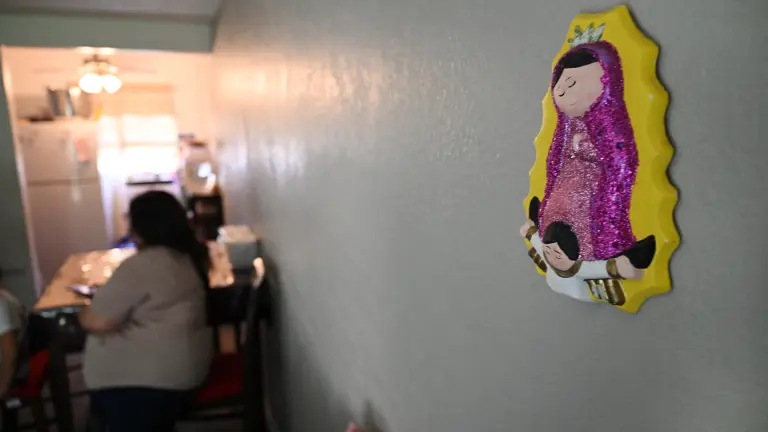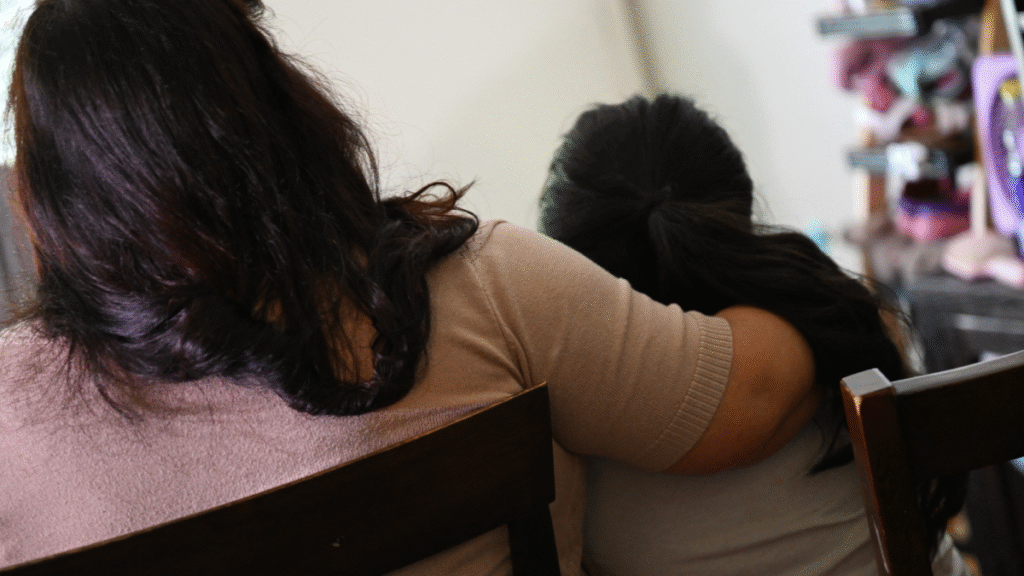Martha’s Struggle to Avoid Homelessness After Spouse’s Detention
Martha, a 39-year-old undocumented Mexican woman, suddenly found herself in the precarious group of individuals fighting to avoid homelessness in Los Angeles County, a region with sky-high housing prices and the largest homeless population in the United States after New York.
When her husband was detained by immigration authorities near Los Angeles in early July, Martha had to separate from her children’s father, who was the sole breadwinner. Consequently, she lost the income that allowed her to maintain her home.

Foto: AFP
Martha’s 65-square-meter apartment in Buena Park, a Los Angeles suburb, costs $2,050 per month. To cover her most urgent needs, she found a night job at a factory earning the minimum wage. It barely keeps her afloat but doesn’t cover all her obligations.
- Car insurance
- Phone bills
- Rent
- School supplies for her two daughters (ages 6 and 7)
“Tormenta”
How long can she maintain this situation, with only three hours of sleep after work before taking care of her daughters? “I can’t tell you,” she murmurs, lost in thought.
Los Angeles, where a third of the population is an immigrant, has been destabilized by the intensification since June of ICE raids to capture undocumented individuals.
- Raids on car washes, hardware stores, and bus stops
- Over 2,200 people arrested in June, with 60% having no criminal history
President Donald Trump’s anti-immigrant offensive is severely impacting Latino workers, who were already among the first victims of the housing crisis in the region. Andrea González, CLEAN Car Wash Workers Center’s deputy director, explains that a bigger storm is coming.
- Not only those detained but also those who remain free are affected
- The concern is that people will end up on the streets
CLEAN helps over 300 households with economic difficulties, whose incomes have plummeted due to arrests or fear of returning to work. The organization has allocated more than $30,000 to assist 20 families with rent payments, but covering everyone’s needs is simply “unsustainable.”
Financial Assistance
Aware of the problem, local Democratic leaders are attempting to establish financial assistance for affected families.
- Los Angeles County plans to create a specific fund
- The city will also launch its own, funded by philanthropic funds and not taxpayer money
Some families might benefit from cards with “a few hundred” dollars, as mentioned by Mayor Karen Bass mid-July. However, González believes these initiatives are insufficient.
- Often, these amounts barely reach 10% of a family’s rent
- A moratorium on evictions, like during the pandemic, should be established
If not, the number of homeless people in Los Angeles (currently 72,000) risks increasing again after two years of slight decline.

Foto: AFP
Maria Martinez’s Struggle to Avoid Homelessness
Maria Martinez, a 59-year-old U.S. citizen, faces the same challenge after her indocumented husband was arrested at a car wash in Pomona mid-June. Since then, she has relied on her children’s help to pay the $1,800 rent, which her $1,000 disability subsidy doesn’t cover.

Foto: AFP
“It’s stressful; we barely survive,” she says.






